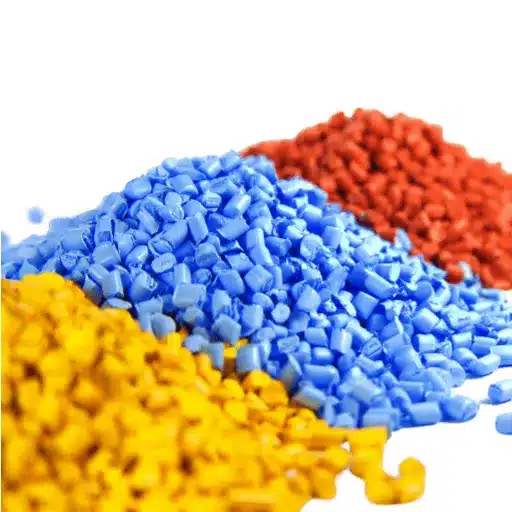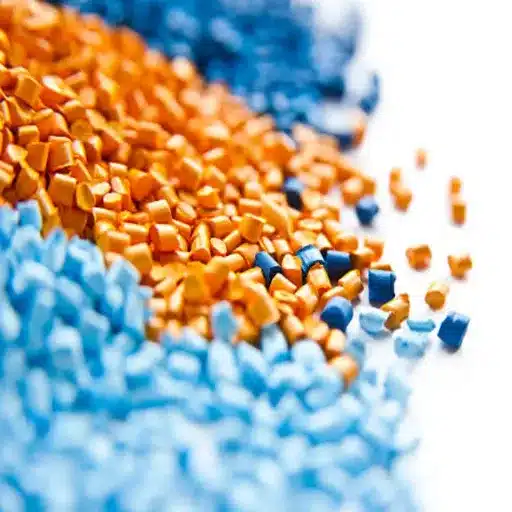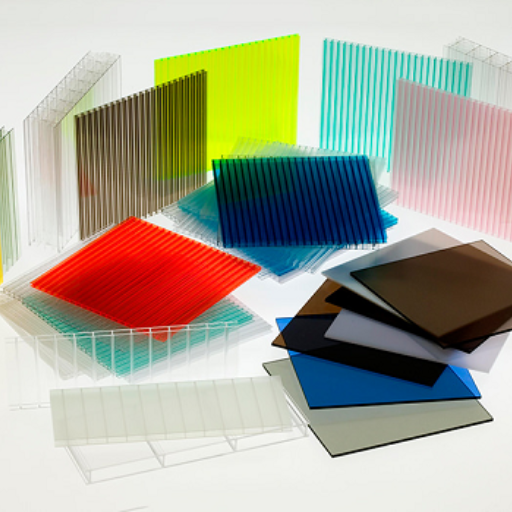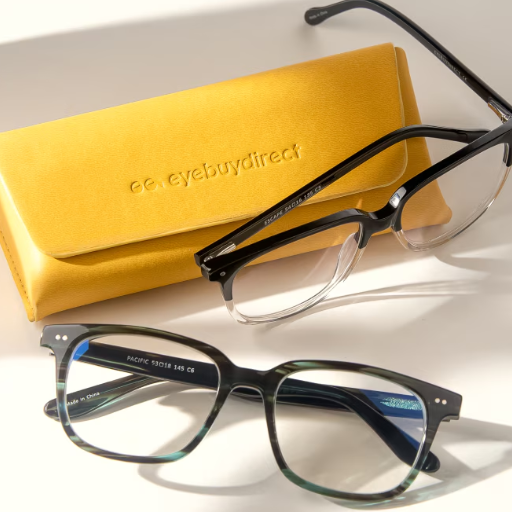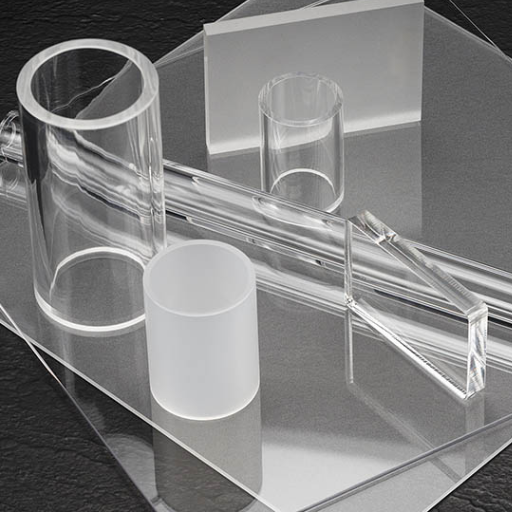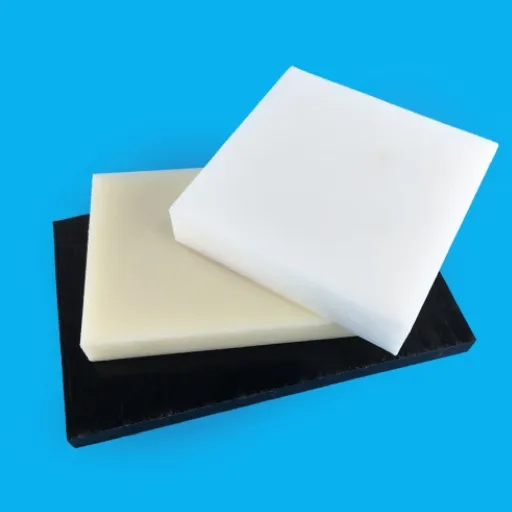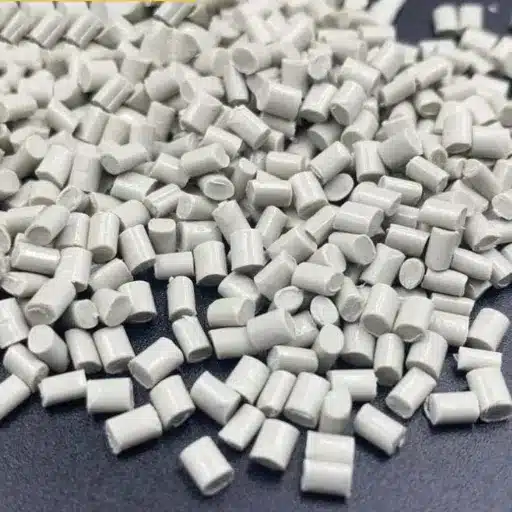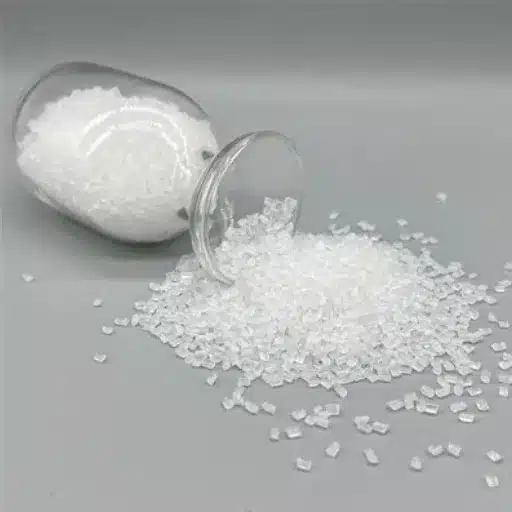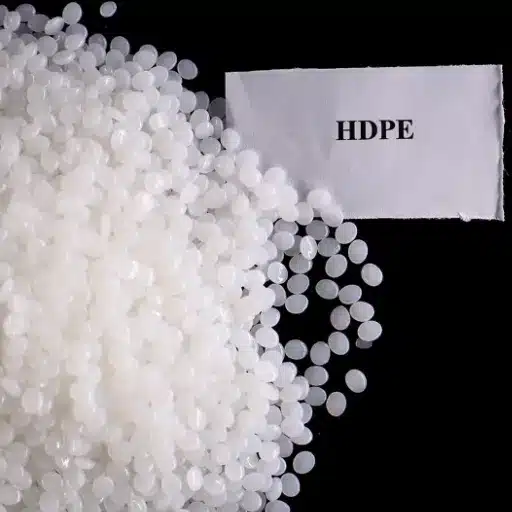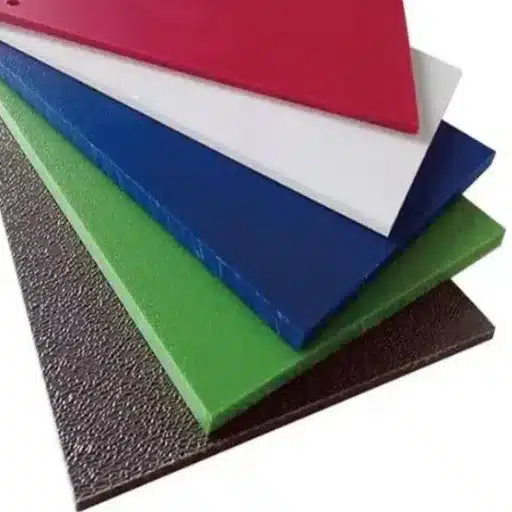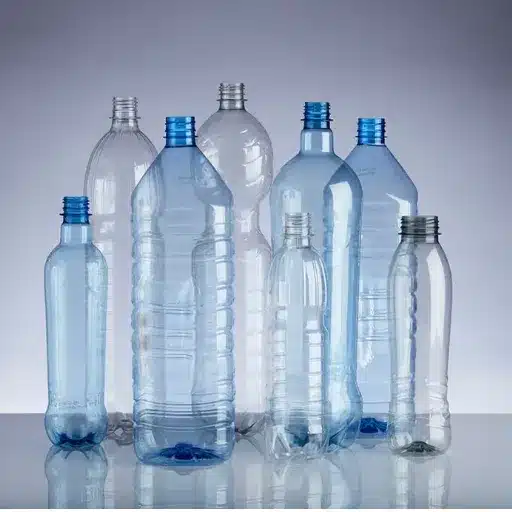Acetal homopolymer, often referred to as POM-H plastic, is a top-notch engineering material recognized for its outstanding strength, low friction, and remarkable durability. Whether you’re manufacturing high-quality parts for the automotive sector, medical devices, or advanced manufacturing tools, understanding the specific properties of POM-H is key to maximizing performance. This comprehensive guide explores the properties of acetal homopolymer, revealing why it’s considered superior among plastics and what makes its characteristics the preferred choice for demanding applications. By the end of this article, you’ll have clear understanding of how POM-H plastic can elevate your projects to higher standards in quality and efficiency.
Introduction to POM-H Plastic
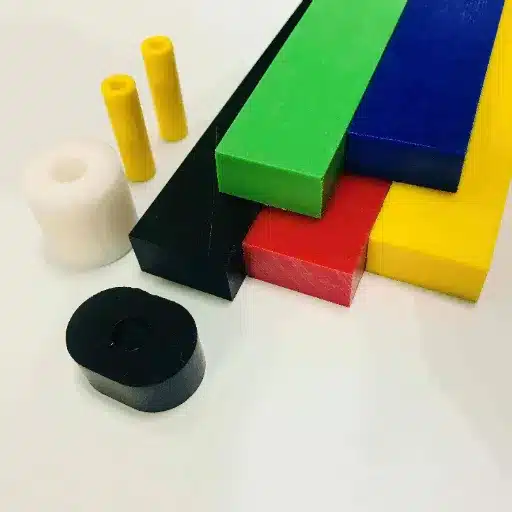
What is POM-H?
POM-H, or Polyoxymethylene Homopolymer, ranks among the most utilized engineering plastics due to its outstanding properties including high strength, rigidity, and dimensional stability. One of the most important chemical components in POM-H’s structure is formaldehyde, present in repeating units that contribute significantly to its mechanical properties, making it superior to acetal copolymers.
Along with its low friction properties and excellent resistance to wear, POM-H serves as the material of choice for applications requiring precision and durability, such as gears, bearings, and automotive parts. Moreover, this polymer resists numerous chemicals including fuels and solvents, enabling use in demanding environments without concerns. Its ability to maintain performance across wide temperature ranges makes it a key player in materials used for advanced manufacturing.
Key Characteristics of POM-H:
- High Crystallinity: Provides exceptional strength and dimensional stability
- Low Friction Coefficient: Enables smooth operation in sliding and rotating applications
- Superior Wear Resistance: Ensures longevity even in abrasive conditions
- Chemical Resistance: Withstands fuels, solvents, and various industrial chemicals
- Thermal Stability: Maintains performance across broad temperature ranges
- Low Moisture Absorption: Preserves dimensional accuracy in humid environments
Acetal Overview and Its Types
Acetal, also known as polyoxymethylene (POM), is a high-performance plastic widely recognized for its strength, rigidity, and dimensional stability. It’s used in cases requiring highest possible precision, lowest friction, and longest possible durability. The plastic type is determined by its synthesis method, forming two main categories:
Homopolymer Acetal (POM-H)
POM-H is the homopolymer type, boasting superior mechanical properties in terms of strength, hardness, and resistance to creep. It’s effectively used in producing highly stiff parts with less moisture absorption, such as precision gears, bearings, and conveyor components.
Primary Applications: Precision gears, bearings, bushings, conveyor components, high-load mechanical parts
Copolymer Acetal (POM-C)
POM-C, the copolymer variant, is renowned for its excellent chemical resistance, especially against acids and alkalines. It has increased thermal stability compared to its counterpart, POM-H, making it suitable for applications like medical devices, food processing equipment, and fluid valves under constant threat of chemical exposure.
Primary Applications: Medical devices, food processing equipment, fluid valves, chemical handling systems
The ideal combination of wide-ranging properties and high-quality features of both acetal types makes them popular choices for demanding environments. Their main qualities are excellent wear resistance, low coefficient of friction, and high machinability.
POM-H Plastic Key Benefits
POM-H (Homopolymer Acetal) ranks among engineering plastics that can withstand heat and moisture, setting itself apart with an extensive list of benefits that make it ideal for demanding applications. Above all, POM-H delivers ultimate stiffness, strength, and dimensional stability when compared to other acetal types.
| Benefit Category | Specific Advantage | Application Impact |
|---|---|---|
| High Crystallinity | Exceptional wear and abrasion resistance | Extended component lifespan in demanding mechanical environments |
| Low Friction | Smooth, quiet operation in sliding parts | Ideal for gears, bearings, and conveyor systems |
| Moisture Resistance | Minimal dimensional change in humid conditions | Consistent performance in varying environmental conditions |
| Chemical Resistance | Withstands solvents, fuels, and chemicals | Reliable performance in industrial and automotive systems |
| Excellent Machinability | Easy to machine to tight tolerances | Versatile manufacturing options for complex designs |
Additionally, the material demonstrates very high resistance to moisture, hot or cold solvents, and various types of chemicals, further increasing its reliability in extreme situations such as industrial machinery and automotive systems. When combined with its excellent machinability, POM-H becomes a material manufacturers can rely on for versatile performance and efficiency in their projects.
Mechanical Properties of POM-H Plastic
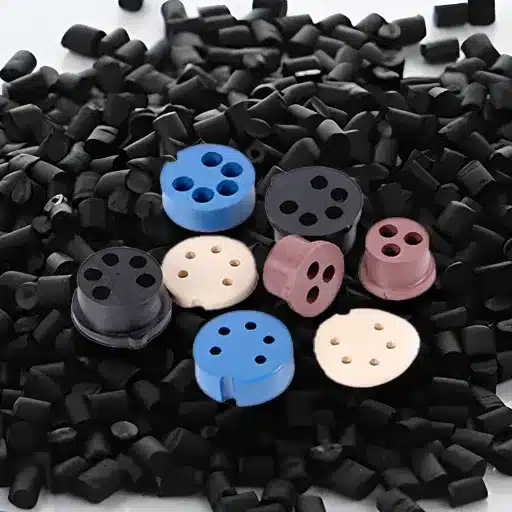
Tensile Strength and Flexural Modulus
POM-H plastic demonstrates superlative mechanical properties, occupying the top position in many applications requiring exceptional performance. The tensile strength of POM-H typically ranges between 60 MPa and 80 MPa, depending upon the particular grade and manufacturing method. High tensile strength like this guarantees the material can accept enormous pulling forces without deformation or breaking.
Likewise, its flexural modulus—the measure of a material’s resistance capacity toward bending—typically falls between 2,500 MPa and 3,200 MPa. The combination of high tensile strength and flexural modulus increases POM-H’s capability to remain intact in shape during weight loading. Therefore, POM-H is approved for use in ultra-precise parts in the automotive and robotics industries.
Mechanical Property Specifications:
| Tensile Strength: | 60-80 MPa (depending on grade) |
| Flexural Modulus: | 2,500-3,200 MPa |
| Load Capacity: | High resistance to deformation under stress |
| Dimensional Stability: | Maintains shape integrity during loading |
Impact Resistance and Fatigue Strength
The impact resistance of Polyoxymethylene Homopolymer (POM-H) is extraordinary, allowing it to absorb and dissipate energy from sudden forces without cracking or failing. Thus, it’s the perfect material for applications requiring durability against repeated shocks or impacts, such as mechanical gears and safety components.
Moreover, POM-H demonstrates very good fatigue strength, meaning it can bear cyclic stresses and repetitive loading for extended periods without suffering serious wear or structural failure. Recent data suggests that, due to its ability to maintain performance over broad temperature ranges and conditions, POM-H is increasingly selected by the automotive industry and consumer electronics for dynamic or high-stress environments. Reliability and longevity are assured even during prolonged operating conditions. Thus, the versatility of POM-H ensures its continued preference as a material for high-performance solutions requiring combinations of hardness and flexibility.
Performance Advantages:
- Shock Absorption: Effectively dissipates energy from sudden impacts without structural failure
- Cyclic Loading Resistance: Withstands repetitive stress over extended operational periods
- Temperature Versatility: Maintains mechanical properties across wide temperature ranges
- Long-Term Reliability: Minimal wear degradation even in high-stress environments
- Structural Integrity: Resists cracking and deformation under dynamic loading
Comparison with Acetal Copolymer
Comparing POM-H (acetal homopolymer) with acetal copolymer reveals major differences characterizing both their limitations and merits according to application needs. Generally, POM-H has better strength, rigidity, and thermal stability than the copolymer. This benefit stems from its uniform crystalline structure contributing to superior mechanical properties, making it the number one choice in demanding applications requiring precision and durability under stress.
On the other hand, acetal copolymer demonstrates more resistance to moisture, chemicals, and thermal oxidation. It’s thus the right choice for areas with high humidity or exposure to harmful chemicals, where the homopolymer might not survive chemical degradation as long as the copolymer. For example, the plumbing and medical industries are often places where acetal copolymer is used because of its excellent properties.
| Property | POM-H (Homopolymer) | POM-C (Copolymer) |
|---|---|---|
| Strength & Rigidity | Superior – Higher mechanical strength | Good – Moderate strength levels |
| Chemical Resistance | Good – Resists most solvents | Excellent – Better acid/alkali resistance |
| Moisture Absorption | Lower – Better dimensional stability | Higher – More susceptible to moisture |
| Thermal Stability | High – Excellent heat resistance | Higher – Better thermal oxidation resistance |
| Typical Applications | Gears, bearings, bushings, precision parts | Medical devices, plumbing, chemical handling |
| Centerline Porosity | Can occur in thick sections | Less susceptible |
Data analyses show trends where acetal homopolymer remains preferred for high-precision components like gears, bushings, and bearings, while acetal copolymer is chosen for applications requiring enhanced chemical stability, as in fluid-handling systems. The final decision between materials depends on exact specifications of the upcoming application, considering factors such as strength, environmental resilience, and long-term performance reliability.
Applications of POM-H Plastic
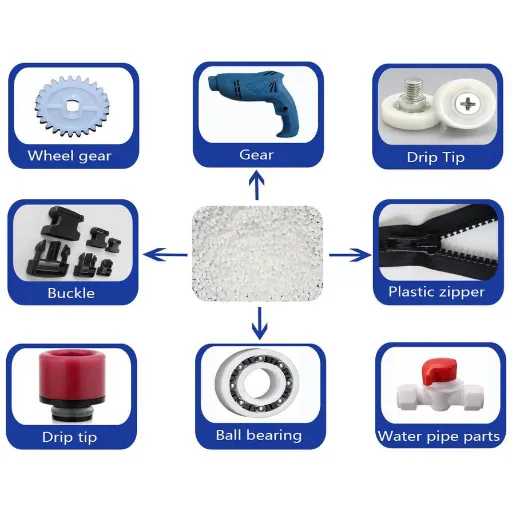
Industrial Machinery Components
The use of POM-H plastic in producing components for industrial machinery is based on its excellent mechanical qualities and resistance to chemicals. POM-H demonstrates its worth in producing industrial parts like precision gears, conveyor belts, and extended-life rollers, coupled with the latest breakthroughs in industrial technology.
A frequently asked question about this material’s use in this area is, “What makes POM-H so suitable for high-stress industrial environments?” Based on information and analysis, POM offers highest stability and least friction—prerequisites for maintaining efficiency under heavy mechanical loads. Likewise, POM is unaffected by certain solvents, oils, or cleaning agents, making it less prone to wear while providing longer life in manufacturing processes. This is why it’s used in all major industries like food processing and automotive, where chemical presence is the norm.
Common Industrial Components:
- Precision Gears: High-load transmission systems requiring minimal friction and wear
- Conveyor Components: Rollers, guides, and chain links for continuous operation
- Bushings and Bearings: Self-lubricating components for rotating assemblies
- Valve Components: Seats, stems, and housings for fluid control systems
- Pump Parts: Impellers, seals, and housing components resistant to chemical exposure
- Fasteners and Clips: High-strength connecting elements requiring dimensional stability
Automotive Industry Uses
Due to its remarkable mechanical strengths and imperviousness to chemicals, POM-H is a material of great importance in the automotive industry. Production of precise and durable gears, bearings, fuel system components, and door mechanisms ranks among its most common applications.
According to latest search engine data, one of the major reasons why POM-H is used in automotive applications is that it can withstand significant strain while maintaining integrity, plus it endures high-temperature conditions without warping or degrading. Moreover, the low-friction nature of the material allows smooth operation while minimizing wear and tear, thereby increasing component lifespan. All these qualities contribute to making POM-H the unavoidable material manufacturers need for “performance” and “reliability” in the automotive market.
| Automotive Component | Function | POM-H Advantage |
|---|---|---|
| Fuel System Parts | Pumps, valves, connectors | Excellent fuel resistance, dimensional stability |
| Door Lock Mechanisms | Latches, actuators, gears | Low friction, quiet operation, long lifespan |
| Seat Belt Components | Buckles, retractors, guides | High strength, impact resistance, reliability |
| Window Regulators | Gears, guides, slides | Smooth operation, wear resistance |
| Under-Hood Components | Clips, brackets, housings | Temperature resistance, chemical stability |
Consumer Goods and Electronics
The range of POM-H versatility steadily surpasses automotive applications, extending significantly into consumer goods and electronics sectors. One of the main advantages of using POM-H is its ability to withstand wear over time. Demand in the market for high-quality, durable materials is further validated by search data confirming POM-H’s application in various products, including gears, zippers, connectors, and camera parts.
Its capability to endure strain from everyday stress while performing excellently makes it a material of choice for high-precision electronics sectors like connectors, switches, and housings. Recent search data shows that customers are increasingly looking for eco-friendly and durable material options for both electronics and daily-use items. POM-H fully aligns with these requirements because it provides extreme longevity, thereby creating products that are not only trustworthy but also have shorter life cycle disposal requirements. Thus, manufacturing using less environmentally unfriendly and resource-consuming materials becomes a practical option.
Consumer and Electronic Applications:
- Precision Zippers: High-quality fastening systems for apparel and bags requiring smooth operation
- Camera Components: Internal gears, lens mounts, and adjustment mechanisms
- Electrical Connectors: Low-friction, dimensionally stable housings for reliable connections
- Switches and Buttons: Durable, responsive components for electronic devices
- Watch Gears: Precision timing mechanisms requiring minimal wear
- Smartphone Components: Internal mechanisms, buttons, and structural elements
- Kitchen Appliances: Gears, latches, and moving parts in food processors and mixers
Manufacturing with POM-H Plastic
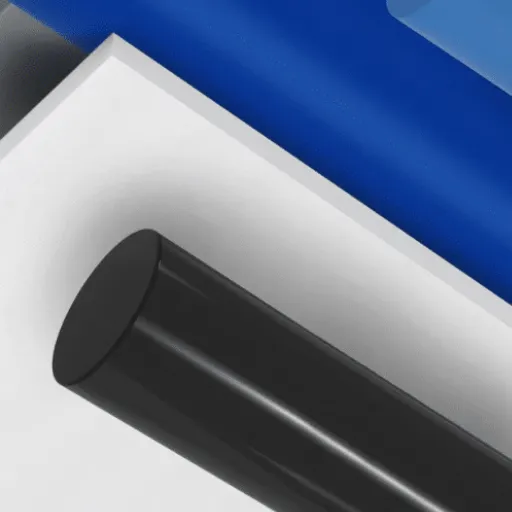
Machining Tolerance and Accuracy
POM-H Plastic acts as a master performer, taking full advantage of super-tight machining tolerances, therefore being the most desirable material in producing precision components. Search engine data indicates that POM-H is the most sought-after material for production of gears, bearings, and other highly detailed parts where accuracy is the major factor.
Manufacturers upholding tight tolerances ensure product efficiency and reliability while addressing customer demand for quality and longevity in modern applications. The combination of excellent machinability and predictable performance of POM-H makes it a superior choice in the precision engineering sector.
Machining Advantages:
| Tight Tolerances: | Achievable precision down to ±0.001 inches (±0.025 mm) |
| Surface Finish Quality: | Excellent finish directly from machining, minimal post-processing |
| Tool Wear: | Minimal tool wear extends cutting tool life |
| Dimensional Stability: | Maintains accuracy post-machining with minimal warping |
| Complex Geometries: | Capable of intricate features and fine details |
Processing Methods: Injection Molding and CNC Machining
To process POM-H (polyoxymethylene homopolymer), injection molding and CNC machining are the two procedures adopted, with each being highly advantageous depending on the application requirements.
Injection Molding
Injection molding is the way to go for large product volumes requiring creation of very complex shapes with high standard accuracy. The use of customized molds supports manufacturers in producing high-volume parts quickly with minimal material waste. Advancements in injection molding, including robot arms for monitoring factors and automating the entire process, provide the same benefits—precision and cost-effectiveness.
Best For: High-volume production, complex geometries, consistent part replication, cost-effective mass manufacturing
CNC Machining
CNC Machining is the best option for producing small to medium batches or manufacturing intricate designs characterized by high precision and tolerance levels. This method allows for wider range of material use and doesn’t require molds, meaning it can be used for prototyping and small-customized batching.
Best For: Low-volume production, prototypes, tight tolerances, custom one-off parts, complex machined features
Molding and CNC machining merging is gaining ground as production workflows are optimized. CNC machining is basically used after injection molding to ensure pieces have the right dimensions while total production time is reduced. This combination method is particularly suited for sectors like automotive and medical devices where precision and scalability are of utmost importance. In the end, project requirements such as budget, volume, and design complexity will determine which method is best.
Factors Affecting Design of POM-H Parts
While designing parts from POM-H (Polyoxymethylene Homopolymer), some essential considerations need to be kept in mind. First, due to the high stiffness and good dimensional stability of the material, it can be used for tight tolerance components, but designs should consider thermal expansion at minimum.
Critical Design Considerations:
- Thermal Expansion: Account for dimensional changes across operating temperature ranges. Design with appropriate clearances to accommodate thermal growth.
- Low Friction Properties: The material’s very low friction makes it suitable for sliding or rotating movement applications, such as gears or bearings. Design mating surfaces to take advantage of self-lubricating characteristics.
- Avoid Sharp Internal Corners: Designers should eliminate sharp internal corners to reduce stress concentrations and avoid cracking under load. Use generous radii for stress distribution.
- Chemical Exposure: POM-H has good resistance to solvents and oils but not to strong acids and bases. Consider environmental exposure when selecting materials.
- Surface Finish: POM-H’s smooth, low-friction characteristics can be further improved by machining or polishing for specific uses. Plan finishing operations accordingly.
- Shrinkage During Molding: Material tends to shrink during molding, requiring appropriate tooling and cooling processes for dimensional accuracy.
- Wall Thickness: Maintain uniform wall thickness to prevent sink marks, warping, and centerline porosity in thick sections.
It’s also important to take into account the material’s tendency to shrink during molding. While designing for durability, appropriate tooling and cooling processes are required to achieve dimensional accuracy and prevent defects.
Comparative Analysis: POM-H vs Other Acetal Plastics

POM-H vs. Delrin®: A Thorough Comparison
POM-H and Delrin® are both acetals and homopolymers that align on a crystal scale. Delrin® has some minor advantages that are dependent on the application. POM-H’s mechanical properties make it suitable for demanding automotive and industrial environments utilizing high-precision parts. POM-H’s low moisture absorbance means it remains dimensionally stable.
On the contrary, Delrin®—as the most common acetal homopolymer brand—improves machinability and delivers consistent performance throughout varying temperature ranges. Therefore it’s frequently used where production is geared toward consumers or where final products require precise machining, like gears, bearings, and electrical housings. Furthermore, Delrin® grades include specialties like impact-resistant or UV-resistant formulations which are adaptable to need-based applications.
| Characteristic | POM-H | Delrin® |
|---|---|---|
| Material Type | Generic acetal homopolymer | Branded acetal homopolymer (DuPont) |
| Crystallinity | High – excellent wear resistance | High – consistent throughout grades |
| Machinability | Excellent | Superior – enhanced for precision work |
| Moisture Absorption | Low – maintains dimensional stability | Low – similar performance |
| Specialty Grades | Standard formulations | Impact-resistant, UV-resistant, FDA-compliant |
| Temperature Performance | Excellent across ranges | Consistent performance, well-documented |
| Typical Applications | Industrial, automotive, general engineering | Consumer products, precision gears, electronics |
Both materials have remarkable frictional properties, but POM-H’s inherently greater crystallinity also gives it an upper hand when wear resistance is the major application requirement. In the end, the decision to go for either POM-H or Delrin® will rely on the needs of each project, considering factors such as the nature of applications, environmental conditions, and load-bearing capacities.
POM-H vs Tecaform®: Strengths and Weaknesses
POM-H and Tecaform® are the most commonly recognized materials offering exceptional mechanical and thermal properties. The higher crystallinity of POM-H results in it being super strong and stiff, making it very suitable for applications involving high load-bearing requirements and low deformation under stress. Besides, it exhibits outstanding wear resistance, speaking to longer life even in abrasive conditions.
In contrast, Tecaform®—the name given to acetal copolymer—has superior dimensional stability and thermal degradation resistance. Unlike POM-H which is susceptible to centerline porosity, Tecaform® also offers better chemical resistance to caustic environments and strong alkalis, making it suitable for applications where chemical exposure is the main factor of concern.
Material Selection Guide:
| Choose POM-H When: | Longevity and toughness in handling heavy loads are priorities; maximum wear resistance is required |
| Choose Tecaform® When: | Excellent machining, chemical resistance, and constant stability for changing temperatures are needed |
Ultimately, selection between POM-H and Tecaform® is based on project requirements. If the application requires longevity and toughness in handling heavy loads, POM-H is the material to choose, but when the environment needs material with excellent machining, chemical resistance, and constant stability for changing temperatures, Tecaform® may turn out to be the better case.
Market Trends in Acetal Plastics
The use of acetal plastics is steadily increasing across a range of industry sectors thanks to their multifaceted capabilities. Recent market research indicates that automotive, healthcare, and consumer electronics industries lead the way with pronounced use of acetal plastics. The automotive industry, in particular, has found an ally in acetal materials due to their lightweight nature and high-performance characteristics that align with automakers’ worldwide fuel efficiency and environmental standards initiatives.
Use of acetal plastic in the healthcare sector has been growing over recent years with medical devices and tools being main applications because of their biocompatibility and sterilizability. Additionally, consumer electronics have benefitted from the dimensional stability of acetal plastics, which helps in current applications such as manufacturing precise and long-lasting components.
Emerging Market Trends:
- Sustainability Focus: Manufacturers developing recyclable and bio-based versions to meet environmental regulations
- Automotive Lightweighting: Increased adoption for fuel efficiency and emissions reduction
- Medical Device Expansion: Growing demand for biocompatible, sterilizable materials
- Consumer Electronics Growth: Precision components for smartphones, wearables, and smart devices
- Industrial Automation: Rising need for durable, low-maintenance components in robotics
- Green Manufacturing: Development of eco-friendly processing methods and recyclability
Queries made through latest technology indicate that manufacturers are developing recyclable and bio-based versions to cater to environmental regulations and more discerning consumer segments wanting sustainable materials, while also being positioned for competition in fast-moving markets. This projection for growth accentuates the role of acetal plastics in industrial and consumer solutions development.
Frequently Asked Questions (FAQ)
What are the machine applications of POM-H plastic?
POM-H plastic is a material extensively used in machine applications where mechanical properties and durability are main factors. This engineering thermoplastic can be used for producing parts needing high stiffness and good wear resistance. Precision parts like pumps and valves would be common applications where these unique material properties contribute to optimum performance in industries. Moreover, production of complex designs and custom-made fittings becomes easy with the material’s machinability. Environmental conditions are also considerations for choosing the material because of its resistance properties.
How does POM-H compare to acetal in terms of mechanical properties?
POM-H is a homopolymer acetal which exhibits the best sliding properties among all acetal grades and is highly wear-resistant. Acetal and POM usually have higher strength and dimensional stability in common, but POM typically has slightly higher density and hardness. This gives acetal a wide range where superior mechanical properties are not the main concern, and one can switch to the more cost-effective copolymer depending on application requirements, such as resistance to impact and thermal properties. However, both materials remain the best options for precision parts requiring high stiffness.
What are the resistance properties of POM-H plastic?
The resistance properties of POM-H plastic include not only good electrical insulation but also great wear resistance. It is chemically resistant, making it an ideal material for industrial applications. Besides that, its thermal expansion is much lower than other plastics, which is important for demonstrating dimensional stability under different temperature ranges. The resistance properties of the plastic contribute to its longevity and reliability even in the most demanding environments. This explains its frequent selection as a ‘material of choice’ for applications characterized by their need for durability and consistent performance.
Is POM-H plastic difficult to bond with adhesives?
POM-H is considered less adhesive due to its low surface energy and unique physical characteristics. Conventional adhesives may not form strong bonds, which necessitates using specialist adhesives meant for polyacetal materials. Pretreatment of surfaces or application of primers can promote adhesion, but these methods could complicate the bonding process. When bonding is necessary, it’s very important to select the right adhesive to ensure strong and durable connections before proceeding. Understanding adhesive compatibility with POM-H is a key aspect in engineering projects and vital for successful implementation.
What are the unique properties of POM-H plastic?
POM-H is a material known for its special features such as the best sliding properties and good wear resistance. These properties lead to material choice in applications where high load capacity requirements exist while friction is present. High dimensional stability, low thermal expansion, and good performance are conditions in which the material excels. Besides that, POM-H is machinable, giving engineers the possibility of creating complex components with great precision. Its strength and toughness highly recommend it for a wide range of engineering applications.
Conclusion
POM-H plastic (Polyoxymethylene Homopolymer) stands as a superior engineering material offering an exceptional combination of mechanical strength, dimensional stability, low friction, and chemical resistance that makes it indispensable across diverse industries. Throughout this comprehensive guide, we’ve explored the fundamental properties that distinguish POM-H from other plastics, including its high crystallinity, outstanding wear resistance, and excellent machinability. From automotive components to industrial machinery, medical devices to consumer electronics, POM-H demonstrates versatility and reliability in demanding applications where precision and durability are paramount. The material’s ability to maintain performance across wide temperature ranges while resisting moisture, fuels, and solvents ensures its continued prominence in advanced manufacturing. When compared to alternatives like acetal copolymers, Delrin®, and Tecaform®, POM-H consistently emerges as the preferred choice for applications prioritizing mechanical strength and wear resistance. The manufacturing flexibility offered through both injection molding and CNC machining enables cost-effective production across various volumes while maintaining tight tolerances essential for precision engineering. As market trends indicate growing demand for sustainable, high-performance materials, POM-H’s recyclability and longevity position it favorably for future applications. Understanding the unique properties, advantages, and optimal applications of POM-H plastic empowers engineers, designers, and manufacturers to make informed material selections that maximize product performance, efficiency, and longevity. Whether you’re designing high-load gears, precision bearings, automotive components, or consumer products, POM-H plastic offers the superior material properties necessary to elevate your projects to the highest standards of quality and performance. By leveraging the insights provided in this guide, you can confidently specify POM-H for applications where engineering excellence and material reliability are non-negotiable requirements.
Reference Sources
-
Virginia Tech – Effect of Polyoxymethylene (POM-H Delrin) Off-Gassing: Discusses the thermal degradation and off-gassing properties of POM-H Delrin in sensor applications. Source
-
University of Tennessee – Toughened Polyoxymethylene by Polyolefin Elastomer: Explores the mechanical properties and chemical resistance of POM as an engineering plastic. Source
-
Syracuse University – Plastics Collection: Provides an overview of POM (Acetal) as a thermoplastic, including its production and applications. Source







